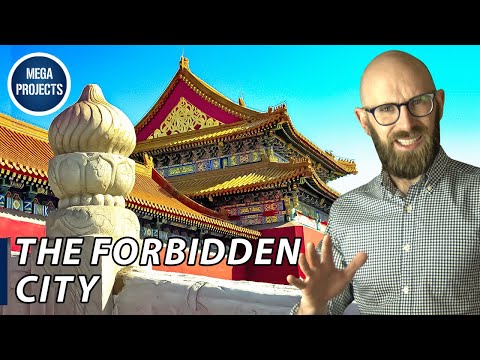
Nestled in the heart of Beijing, the Forbidden City stands as a monumental tribute to the grandeur and mystery of China’s imperial past. Constructed during the Ming Dynasty under the orders of Emperor Yongle in 1406-1420, this sprawling complex served as the home of emperors and their households for almost 500 years, making it one of the most significant cultural landmarks in Chinese history.
### Architectural Marvel
Spanning approximately 180 acres with a total of nearly 1,000 buildings, the Forbidden City is recognized as one of the most important examples of traditional Chinese palatial architecture. The design embodies not only the aesthetic beauty and engineering marvels of Chinese construction but also traditional Feng Shui principles intended to harmonize everyone within its walls with their environment.
The city is strategically arranged from south to north according to an axis considered vital for Chinese geomancy. It boasts opulent halls, massive ceremonial courtyards, and intricate residential quarters all enclosed within a well-fortified wall adorned with watchtowers. The main entrance, known as the Meridian Gate, leads to vast courtyards that serve both as a demarcation between secular and spiritual realms and spaces where significant public ceremonies were held.
### A Synonym for Power and Secrecy
The name ‘Forbidden City’ derives from its long-standing prohibition against entry or exit without express permission from the emperor—an edict that underscored its aura of secrecy and exclusivity. Inside these walls, dynastic politics played out far from public eyes, involving intricate rituals and ceremonies designed to uphold imperial authority. The inner sanctum housed not just royalty but also numerous courtiers, eunuchs, concubines, and servants; together forming an elaborate hierarchy strictly governed by Confucian principles.
### Rich Symbolism
Every aspect of the Forbidden City’s construction carries deep cultural significance. Red walls symbolize good fortune; yellow roof tiles represent earth elements central in cosmology and power since yellow was reserved for royalty. Moreover, dragons—symbols of imperial power—are intricately woven into architectural details throughout, emphasizing the emperor’s divine mandate to rule.
### Cultural Heritage
Today, the Forbidden City is no longer home to royalty but serves as The Palace Museum since 1925. It holds an extensive collection of artwork and artifacts from ancient China—some dated back thousands of years across various dynasties—providing insights into China’s rich history and culture. These include invaluable scrolls, ceramics, ancient clocks made by Jesuit missionaries at court; all telling stories about not just royal life but also about how China interfaced with other cultures throughout its tumultuous history.
### UNESCO Recognition
Recognized as a World Heritage site in 1987 by UNESCO for its architectural significance and profound cultural implications that resonate far beyond its physical boundaries; it sees millions visit each year attracted by its storied past embedded within each pavilion’s intricately carved designs.
### Conclusion
The Forbidden City remains one of China’s crowning cultural jewels—an enduring symbol of its historical narrative woven through centuries marked by both magnificent achievements and profound tribulations. Visitors walking through this palatial complex not only traverse physical space but also journey through time exploring rich tapestries entwined within each stone laid down by those who lived through dynastic rules spanning half a millennium.
